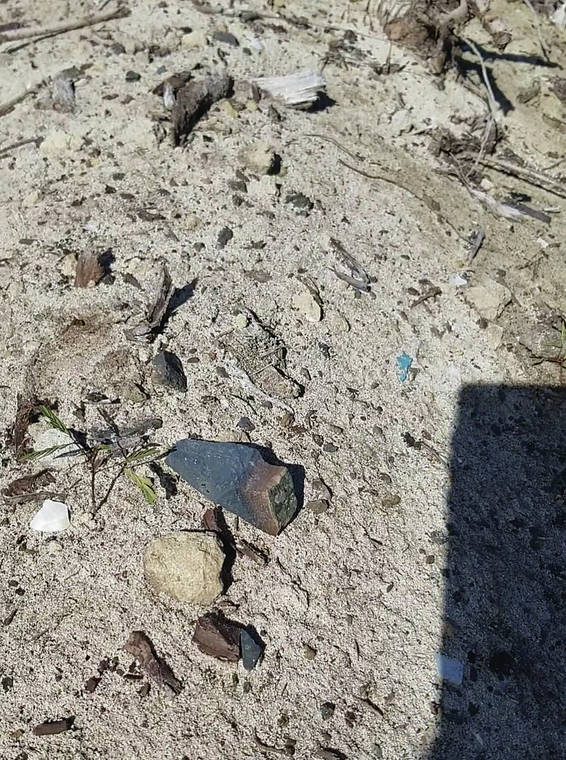An investigation by State Historic Preservation Division employees at Sherwood Forest began Monday as arguments continued over the validity of a construction project and its worth to the community.
Members of Save Our Sherwoods, who have led opposition to the city’s
$1.43 million plan to build a multipurpose field, 11-stall parking lot and playground, said they saw six SHPD
employees and five Honolulu Police Department
personnel at the Waimanalo Bay Beach Park construction site around noon on Monday.
The presence of SHPD, which maintains archaeological reports and protects and preserves historic properties, may have been
triggered by a possible discovery at the site. A
Honolulu city spokesperson said a University of Hawaii archaeologist found “an
artifact” on Saturday.
SHPD could not be reached for comment.
The possible finding and the project itself are on the agenda for the Oahu Island Burial Council’s monthly meeting on Oct. 9. The council will invite city
officials to make a presentation. The meeting, which is open to the public, will be
at the Kalanimoku Building downtown at 11 a.m.
“The City and County now needs to be able to speak for this project,”
said Hinaleimoana Wong-Kalu, the council’s chairwoman. “They need to be able to articulate the work that has been done and not been done, and once we get to ask questions, then we get to determine what kind of position we want to take.”
Wong-Kalu said the council doesn’t have much
decision-making power
regarding whether the
project goes forward, but if a burial site were to be discovered at the location
the council would be able to approve or reject a plan for how it should be handled.
She said that a 2012
Archaeological Inventory Survey reported a minimal amount of burial findings, which were not enough to alarm the council.
Mabel Ann Keliihoomalu, a longtime Waimanalo resident who participated in the project’s initial planning, spoke out Monday about her support for the construction project.
She said she supports
development in the area and said a “silent majority” does as well.
“You cannot stop people,” she said when asked about the increased tourists and visitors that development might bring. “We just try
for get along. … Be respectful for the people living there. I mean, that’s all we can ask, right?”
Keliihoomalu said stopping the project would be a waste of taxpayer money, that there are no iwi kupuna on the site and that the community had many opportunities to voice their opinions if they opposed the project.
“People did have a chance (to object),” she said. “Why they don’t participate, I don’t know, but it shouldn’t penalize the people who do participate like me.”
Tracy Newman, one of the organizers of SOS, said she’s seen no evidence that a majority of the community wants the project to continue. “She does not realize that the plan that (she and other supporters) approved … is not the one the city
is implementing today,” Newman said.
She said she’s reached out to Keliihoomalu and Caldwell to discuss the
information the group has found but has gotten no
response.
Newman said opponents of the project are not against development but are for preservation.

